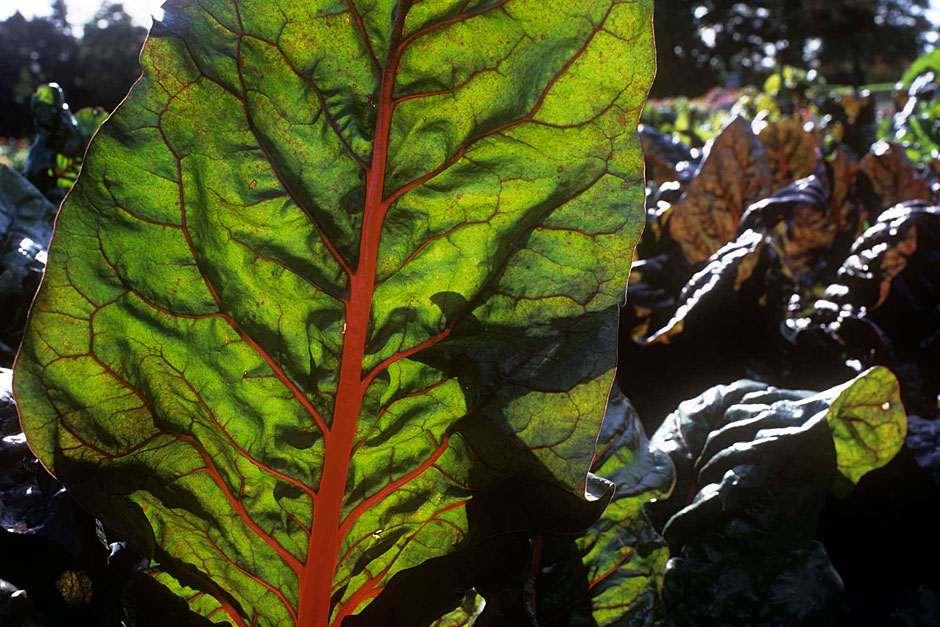Chard is an attractive and versatile vegetable - its glossy leaves and dazzling leaf stalks make it stunning to look at as well as tasty to eat

Tender baby leaves will brighten up salads, while larger ones can be cooked like spinach and their crisp leaf stalks are a colourful addition to stir-fries. Sow in July and you'll have leaves to pick throughout autumn and winter.
What you need
- Container (at least 25cm/10in deep)
- Compost
- Chard seed: multi-coloured cultivars such as ‘Bright Lights’ are the most striking, their stalks ranging from brilliant red through orange and yellow to white. Alternatively go for single colours: ‘Rhubarb’ or ‘Ruby’ chard has bright red stems, and plain Swiss chard cultivars such as ‘Fordhook Giant’ have white stems.
Sowing
- Place the container in a sunny, sheltered spot and fill it with compost to within 2.5cm (1in) of the rim.
- Sow seeds 1cm (1/2in) deep and 2.5cm (1in) apart each way, spread over the whole area, and water with a fine spray.
- After the seedlings have emerged, thin them out to eventually leave plants 5-8cm (2-3in) apart. Wait until you can see the tint on their stems, so you can keep ones that span the full colour range. The edible thinnings can be your first harvest.
Growing
Keep the plants well watered. Chard doesn’t usually suffer from troublesome pests or diseases, although keep a watch out for slugs.
Harvesting
 After 8-10 weeks, the leaves should be big enough to harvest for salad, or wait until they grow larger for cooking. Pick individual leaves from each plant as you need them, cutting them right at the base of the stalk. The plants stop growing in winter but, if the container is in a sheltered spot, they should survive mild winters to produce a fresh crop in spring.
After 8-10 weeks, the leaves should be big enough to harvest for salad, or wait until they grow larger for cooking. Pick individual leaves from each plant as you need them, cutting them right at the base of the stalk. The plants stop growing in winter but, if the container is in a sheltered spot, they should survive mild winters to produce a fresh crop in spring.
Added extras
Parsley also gives useful autumn pickings, and its rich green leaves make a good foil for the vivid chard stems. Whereas spring-grown plants often struggle with pests and disease, those bought now should stay healthy. Choose small young plants (not ones whose roots are already circling round, tightly bound in the pot) and tuck them in 15-20cm (6-8in) apart around the edges of large containers. Alternatively, give them a deep pot of their own with the same nutrient-rich compost.
For extra colour add a few small-flowered pansies. They will bloom throughout autumn and their delicate flowers are edible – mild in taste but making an attractive garnish to winter salads.
Get the kids involved
It's never too soon to get kids active and helping on the vegetable plot or in the garden.
Jobs to do now
Find out what to do this month on your edible plot.

